September 2021 - Update
Author na1616mewedewd
Business as Usual
As we go in and out of lockdowns, it’s business as usual at Crawford Accountants, so there is no reason to delay your tax return. Although our office is closed for appointments during lockdowns, our team continues to work remotely at the same capacity, and we encourage you to organise your tax appointment via telephone or Zoom by calling us on 03 9853 1000 or email us on admin@crawfordaccountants.com.au.
Support for Victorians who could not work due to Lockdown 6
Financial support is still available from the federal government for those who have lost work due to the lockdowns. We also encourage you to keep an eye out for our regular updates as we constantly update you with support programs and grants as they become available.
If you are an employee who lives in an area affected by a health order (lockdown) and have lost more than 20 hours of work, you may be eligible for $ 750 per week, and if you have lost between 8 - 20 hours of work, you may be eligible for $ 450 per week.
If you are a sole trader and you did not qualify for business support, you may be eligible for the Disaster Payment. Trusts and Companies should refer to business support.
Please refer the following link for eligibility criteria and application process.
https://www.servicesaustralia.gov.au/individuals/services/centrelink/covid-19-disaster-payment-victoria
ATO PAYG Instalments now issued to myGov
ATO continues to issue PAYG instalment notices to myGov accounts. If you have not received your quarterly PAYG Instalment from our office, please keep an eye on your myGov account.
Extending administrative relief for companies to use technology
The Government has passed legislation renewing the temporary relief that allows companies to use technology to meet regulatory requirements under the Corporations Act 2001.
These temporary relief measures will allow companies to hold virtual meetings and use electronic communications to send meeting-materials and execute documents until 31 March 2022. This should ensure that companies can meet their obligations as they continue to deal with the uncertainty of the COVID-19 pandemic.
With the extension of this temporary relief, the Government will now seek to introduce permanent reforms later this year to give companies the flexibility to use technology to hold meetings, such as hybrid meetings, and sign and send documents.
Expansion of support for SMEs to access funding
The Government is providing additional support to small and medium sized businesses ('SMEs') by expanding eligibility for the SME Recovery Loan Scheme.
Specifically, in recognition of the continued economic impacts of COVID‑19, the Government will remove requirements for SMEs to have received JobKeeper during the March quarter of 2021, or to have been a flood affected business, in order to be eligible under the SME Recovery Loan Scheme.
As with the existing scheme, SMEs who are dealing with the economic impacts of the coronavirus with a turnover of less than $250 million will be able to access loans of up to $5 million over a term of up to 10 years.
Other key features include:
- The Government guarantee will be 80% of the loan amount.
- Lenders are allowed to offer borrowers a repayment holiday of up to 24 months.
- Loans can be used for a broad range of business purposes, including to support investment, as well as to refinance any pre-existing debt of an eligible borrower.
- Loans can be either unsecured or secured (excluding residential property).
- The loans will be available through participating lenders until 31 December 2021.
Div.293 concessional contribution assessments have been issued
The ATO has recently issued approximately 30,000 Division 293 assessments for the 2018/19 and 2019/20 financial years.
Due to a system issue, concessional contributions reported for these financial years were not included in Division 293 assessments where that super account was also reported as closed during that financial year. This reporting issue was resolved in June 2021, and this has resulted in affected members receiving either an initial or amended Division 293 assessment.
Time running out to register for the JobMaker Hiring Credit
The JobMaker Hiring Credit scheme's third claim period is now open. If a taxpayer has taken on additional eligible employees since 7 October 2020, they may be able to claim JobMaker Hiring Credit payments for their business.
Eligible businesses can receive up to:
- $10,400 over a year for each additional eligible employee hired aged 16 to 29 years; and
- $5,200 over a year for each additional eligible employee hired aged 30 to 35 years.
The JobMaker Hiring Credit is available to businesses for each additional eligible employee hired before 6 October 2021, so, if a business is thinking about taking on extra staff, they should check if they are eligible to participate in the scheme.
Victorian Commercial Tenancy Relief Scheme
If you’re a commercial tenant struggling with rent payments, support is available through the Commercial Tenancy Relief Scheme.
Small and medium businesses that have experienced a loss in turnover of more than 30% during the pandemic will receive financial relief in the form of proportionate rent reduction. The Scheme will apply retrospectively from 28 July 2021 and will run until 15 January 2022.
Tenants and landlords can contact the Victorian Small Business Commission for further information on 13 87 22 or visit vsbc.vic.gov.au.
Victorian Commercial Landlord Hardship Fund 3
Small landlords can apply for a grant of up to $6,000 per eligible tenancy in proportion to their ownership share. In cases where landlords are experiencing acute hardship because of the rent waiver agreed with their tenant(s), the grant may be increased to a maximum of $10,000 per eligible tenancy.
Applications to the Commercial Landlord Hardship Fund 3 will close at 11:59pm on 15 January 2022, or until funds are exhausted.
To be eligible for the fund, the landlords must:
- Have received a written request for rent relief made by a commercial tenant
- Respond to the tenant in writing within 14 days, or the agreed timeframe
- Agree to reduce rent in proportion to their tenant’s downturn in turnover
- At least 50 per cent of the agreed rent relief must be a rent waiver
- Provide the tenant with a landlord acceptance letter detailing the agreement.
- Is a small landlord with total taxable landholdings of less than $3 million, including part holdings but excluding principal place of residence, or where a property is held on trust, the total taxable landholdings of the trust must be less than $3 million
- Is an owner and landlord of the property for which an application is made
- Is a landlord that has made a rent relief agreement with their tenant under the Commercial Tenancy Relief Scheme in operation between 28 July 2021 and 15 January 2022
- Is an Australian citizen, resident or Australian incorporated entity.
The information provided in this update is general in nature and if you have any queries of require further information or assistance with the above, please contact our office.
Crawford News

ATO's new focus for small business The ATO is currently focusing on the following 'specific risk areas', where it is concerned "small businesses are getting it wrong": Contractors omitting income — with a focus on data matching to ensure all income is reported. Quarterly to monthly BAS reporting for GST purposes — The ATO will move around 3,500 small businesses with a history of non-compliance to monthly reporting from 1 April 2025. The ATO will also continue its focus on non-commercial business losses, small business CGT concessions, business income that is not personal income, incorrect claims for 'small business boosts', GST registration and income of taxi, limousine and ride-sourcing services. Reminder of March 2025 Quarter Superannuation Guarantee Employers are reminded that employee super contributions for the quarter ending 31 March 2025 must be received by the relevant super funds by Monday, 28 April 2025. If the correct amount of SG is not paid by an employer on time, they will be liable to pay the SG charge, which includes a penalty and interest component. The SG rate is 11.5% for the 2025 income year. FBT record keeping and plug-in hybrid exemption changes With the 2025 FBT year having just ended on 31 March, the ATO is reminding employers of some changes that might impact their FBT obligations. Alternative record keeping changes For the 2025 and succeeding FBT years, employers can use existing records instead of travel diaries and declarations for some fringe benefits. If using existing corporate records, employers need to meet the minimum required information at the time of lodging the FBT return. Keeping the right records ensures employers can correctly calculate the taxable value of the benefit and support their FBT position. Plug-in hybrid electric vehicle changes The FBT exemption for plug-in hybrid electric vehicles ('PHEVs') broadly ended on 31 March 2025, so the 2025 FBT year may be the last year that employers can claim the exemption. However, an employer can continue to apply the exemption if that PHEV was used, or available for use, before 1 April 2025 (and that use was exempt), and they have a financially binding commitment to continue providing private use of the vehicle on and after 1 April 2025. Taxable payments annual report lodgment reminder Businesses that pay contractors for Taxable payments reporting system services may need to lodge a Taxable payments annual report by 28 August each year. This includes businesses paying contractors in the building and construction, cleaning and IT industries. From 22 March, the ATO will apply penalties to businesses that have not lodged their TPAR from 2024 or previous years. General transfer balance cap will be indexed on 1 July 2025 The transfer balance cap will increase from $1.9 million to $2 million on 1 July 2025. The general TBC amount is used for a number of purposes, including to determine the total capital amount that can be transferred to the pension phase, and to determine eligibility for making non-concessional contributions. This increase has flow through impacts for individuals who have started a retirement phase pension, as they will be entitled to an increase to their personal TBC if they have not previously been at, or exceeded, their cap. The ATO will calculate an individual's personal TBC based on the information reported to and processed by the ATO. To help individuals have a clear understanding of their position, the ATO encourages funds to report all 'TBC events' when they occur and as early as possible before the 1 July 2025 indexation start date. The information provided in this Newsletter is general in nature and if you have any queries or require further information or assistance with the above, please contact our office.

New tax cuts for individual taxpayers in 2027 and 2028 The individual tax rates will reduce effective 1 July 2026. The current 16% tax rate will be reduced to 15% from 1 July 2026 and will be further reduced to 14% from 1 July 2027. The personal income tax rates (excluding the Medicare levy) for the 2025 and 2026 income years are in the following table, along with the proposed changes to the tax rates for the 2027 and 2028 income years: Australian resident individual tax rates Income threshold Tax Rate 2025 & 2026 2027 2028 $ 0 - $ 18,200 0% 0% 0% $ 18,201 - $ 45,000 16% 15% 14% $ 45,001 - $ 135,000 30% 30% 30% $ 135,001 - $ 190,000 37% 37% 37% $ 190,001+ 45% 45% 45% A taxpayer earning between $18,201 and $45,000 will get a tax cut of up to $268 in the 2027 income year and up to $536 from the 2028 income year. I ncreased Medicare levy thresholds The Medicare levy thresholds were increased from 1 July 2024 per below: No Medicare levy payable below 2024 2025 Individuals $ 26,000 $ 27,222 Families not eligible for SAPTO $ 43,846 $ 45,907 Single individuals eligible for SAPTO $ 41,089 $ 43,020 Families eligible for SAPTO $ 57,198 $ 59,886 For each dependent child or student, the family income thresholds will increase by a further $4,216 up from $4,027. Student loan amendments The government will reduce all outstanding Higher Education Loan Program and other student debts by 20%, subject to the passage of legislation. The 20% reduction is in addition to the recent indexation reforms. The repayment threshold will be increased from $54,435 in the 2025 to $67,000 in the 2026. Energy bill relief Eligible households and small businesses will receive two $75 bill rebates directly off their electricity bills until 31 December 2025. Expansion to Help to Buy scheme for first home buyers Under the Help to Buy scheme, the Government will provide an equity contribution of up to 40% to support eligible home buyers to purchase a home with a lower deposit and a smaller mortgage. The income caps for the scheme will be increased from $90,000 to $100,000 for individuals and from $120,000 to $160,000 for joint applicants and single parents. Small Business and Franchisee Support and Protection The ACCC and ASIC will be funded to: Strengthen regulatory oversight of the Franchising Code of Conduct. Improve its data analytics capability to better target enforcement activities to deter illegal phoenixing activities, particularly in the construction sector. The information provided in this Newsletter is general in nature and if you have any queries or require further information or assistance with the above, please contact our office.

Employer obligations in 2025 Taxpayers who employ staff should remember the following important dates and obligations: Fringe benefits tax 31 March 2025 marks the end of the 2024/25 FBT year. Employers should remember the following regarding their FBT tax time obligations. They should identify if they have provided a fringe benefit. If they have, they should determine the taxable value to work out if they have an FBT liability. They should lodge an FBT return and pay any FBT owed by 21 May 2025. If their registered tax agent lodges electronically for them, they have until 25 June 2025. They should keep the right records to support their FBT position. PAYG withholding Taxpayers need to withhold the right amount of tax from payments they make to their employees and other payees, and pay those amounts to the ATO. Single touch payroll Employers should finalise their STP data by 14 July 2025 for the 2024/25 financial year (there may be a later due date for any closely held payees). Super guarantee 28 January, 28 April, 28 July and 28 October are the quarterly due dates for making SG payments; The SG rate is currently 11.5% of an employee's ordinary time earnings. From 1 July 2025, it will increase to 12% Taxpayers should ensure SG for their eligible employees is paid in full, on time and to the right super fund, otherwise they will be liable for the SG charge. ATO's tips to help taxpayers stay on top of their BAS If lodging online, or through a registered tax or BAS agent, you may be able to get an extra 2 or 4 weeks to lodge and pay. If you have nothing to report for the period, you must lodge a nil BAS. If you made a mistake on your last BAS, instead of lodging a revision, you may be able to use your current BAS to fix it. You can also use their BAS to vary an instalment amount. Claiming fuel tax credits when rates change Fuel tax credits changed on 3 February, and taxpayers could receive more savings for fuel they have acquired on and from this date. Different rates apply based on the type of fuel, when it was acquired and what activity it is used for. The ATO has the following tips for taxpayers to ensure they are claiming correctly. You can use the ATO's 'eligibility tool' on its website to find out if they can claim fuel tax credits for fuel they have acquired and used. You can use the ATO's online fuel tax credit calculator to work out their claim. ATO "busts" NFP myths As the Not-for-profit self-review return is due in March, the ATO has recently published a document 'busting' various NFP 'myths'. Myth 1: All NFPs are income tax exempt ATO response: This is not true. Some NFPs are income tax exempt and some are taxable. Myth 2: There is only one way to lodge the NFP self-review return ATO response: There are three ways, as follows: A 'principal authority' may be able to lodge using 'Online services for business'; It may be possible for the return to be lodged by phoning the ATO's automated self-help phone service on 13 72 26; and A registered tax agent can lodge the return through Online services for agents. Myth 3: Anyone can lodge the NFP self-review return online ATO response: If lodging via Online services for business, anyone authorised to access the return in Online Services can lodge. If a registered tax agent has been engaged, they can also prepare and lodge the return in Online services for agents. Myth 4: If a person is unsure whether their NFP has charitable purposes, then they do not need to lodge ATO response: The self-review return still needs to be lodged, even if it is not certain whether the NFP is charitable. Taxpayer's claim for input tax credits unsuccessful In a recent decision, the Administrative Review Tribunal rejected a taxpayer's claim for input tax credits on the basis that all the relevant GST returns (i.e., BASs) were lodged out of time. For the GST periods from 1 October 2015 to 31 March 2017, the taxpayer filed each of her GST returns more than four years after they were due. The taxpayer still claimed input tax credits totalling over $10,000 for this period. The ATO disallowed this claim, on the basis that none of the input tax credits were claimed within the four year period, as required by the GST Act. The ART upheld the ATO's decision, noting that, as the taxpayer did not file the GST returns within the four year period. ATO's appeal against decision that UPEs are not "loans" The Full Federal Court recently dismissed the ATO's appeal against an AAT decision that unpaid present entitlements ('UPEs') owing by a trust to a corporate beneficiary were not "loans" for Division 7A purposes. A corporate beneficiary had become entitled to a share of the income of a trust for the 2013 to 2017 income years. Parts of these entitlements remained outstanding, resulting in UPEs. The ATO treated these UPEs as loans from the corporate beneficiary back to the trust and, in consequence, as "deemed dividends" made to the trust. The AAT held at first instance that a loan had not been made in this case. The Full Federal Court upheld the AAT's decision, noting that a loan for Division 7A purposes requires an obligation to repay an amount, not merely the creation of an obligation to pay an amount such as when a trust distributes income to a beneficiary. The information provided in this Newsletter is general in nature and if you have any queries or require further information or assistance with the above, please contact our office.

CGT withholding measures now law The Government recently passed legislation making changes to the foreign resident capital gains withholding laws (among other changes). Foreign resident capital gains withholding is relevant for all vendors selling certain taxable real property (e.g., Australian land). Even Australian residents can be caught by these laws because, if they do not have a valid 'clearance certificate' issued by the ATO at, or before settlement, tax must be withheld from the sale proceeds by the purchaser and paid to the ATO. The new legislation increases the foreign resident capital gains withholding rate to 15% (from 12.5%), and completely removes the threshold (currently $750,000) before which withholding applies. This means that all disposals of taxable real property are potentially subject to foreign residents' capital gains withholding requirements regardless of the market value of the CGT asset. These amendments take effect from 1 January 2025. ATO's notice of rental bond data-matching program The ATO will acquire rental bond data from State and Territory rental bond regulators bi-annually for the 2024 to 2026 income years, including details of the landlord and tenant, managing agent identification details, and rental bond transaction details. The objectives of this program are to identify and educate individuals and businesses who may be failing to meet their registration or lodgment obligations. The ATO expects to collect data on approximately 2.2 million individuals each financial year. Study/training loans — What's new The indexation rate for study and training loans is now based on the Consumer Price Index or Wage Price Index — whichever is lower. This change has been backdated to indexation applied from 1 June 2023 for all HELP, VET Student Loan, Australian Apprenticeship Support Loan, and other study or training support loan accounts. Consequently, indexation rates for 2023 and 2024 have changed to: 3.2% for 1 June 2023 (reduced from 7.1%); and 4% for 1 June 2024 (reduced from 4.7%). Individuals who had a study loan that was indexed on 1 June 2023 or 1 June 2024 do not need to do anything. Individuals whose study loan is in credit after the adjustment may receive a refund for the excess amount to their nominated bank account, if they have no outstanding tax or Commonwealth debts. When to lodge SMSF annual returns All trustees of SMSFs with assets as at 30 June 2024 need to lodge an SMSF annual return for the 2023/24 financial year. The SAR is more than a tax return — it is required to report super regulatory information, member contributions, and pay the SMSF supervisory levy. However, not all SMSFs have the same lodgment due date: Newly registered SMSFs and SMSFs with overdue SARs for prior financial years (excluding deferrals) should have lodged their SAR by 31 October 2024. All other self-preparing SMSFs need to lodge their SAR by 28 February 2025 (unless the ATO has asked them to lodge on a different date). For SMSFs that lodge through a tax agent, the due date for lodgment of their SAR is generally 15 May or 6 June 2025. SMSFs that have engaged a new tax agent need to nominate them to confirm they are the authorised representative for the fund. SMSF trustees must appoint an approved SMSF auditor no later than 45 days before they need to lodge their SAR. Before they lodge, they must ensure that their SMSF's audit has been finalised and the SAR contains the correct auditor details. The information provided in this Newsletter is general in nature and if you have any queries or require further information or assistance with the above, please contact our office.


